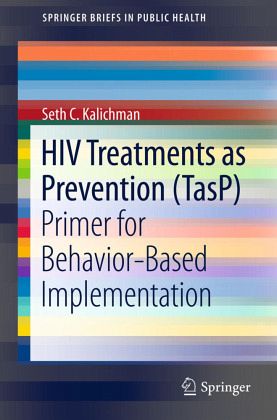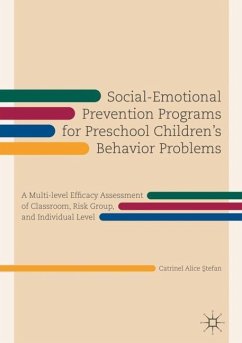
HIV Treatments as Prevention (TasP)
Primer for Behavior-Based Implementation

PAYBACK Punkte
19 °P sammeln!
HIV Treatment as Prevention: Primer for Behavior-Based Implementationprovides the first practical guide to integrating behavioral prevention with antiretroviral therapies for people living with HIV infection. This brief book discusses the historical and social context embedding the shifting landscape in HIV prevention, where the use of effective treatments have become the focus of HIV prevention. While using treatments for prevention is promising, the history of HIV prevention offers several important pitfalls that must be avoided if HIV treatments are to ultimately succeed in preventing new H...
HIV Treatment as Prevention: Primer for Behavior-Based Implementationprovides the first practical guide to integrating behavioral prevention with antiretroviral therapies for people living with HIV infection. This brief book discusses the historical and social context embedding the shifting landscape in HIV prevention, where the use of effective treatments have become the focus of HIV prevention. While using treatments for prevention is promising, the history of HIV prevention offers several important pitfalls that must be avoided if HIV treatments are to ultimately succeed in preventing new HIV infections. Lessonslearned from the successes and failures of other biomedical technologies used in HIV prevention, specifically syringes, condoms, and HIV testing are critical to the success of using HIV treatments for prevention.HIV Treatment as Prevention: Primer for Behavior-Based Implementationsummarizes the scientific evidence for advancing the use of antiretroviraltherapies for HIVprevention. The evidence makes clear that HIV treatments can prevent HIV transmission, but will fail if behavioral aspects of treatment and HIV transmission are ignored. Of greatest concern are medication adherence and risks for contracting other sexually transmitted infections. Placing HIV treatment within the context of behavioral interventions for maintaining medication adherence and reducing sexual risk behaviors is therefore essential to the futureof HIV prevention. HIV Treatment as Prevention: Primer for Behavior-Based Implementation highlights two pioneering behavioral interventions aimed at maximizing the effects of antiretroviral therapies for preventing HIV transmission. One of the interventions, developed by the Author's research team, is discussed in detail and the intervention manual is included as an Appendix.














